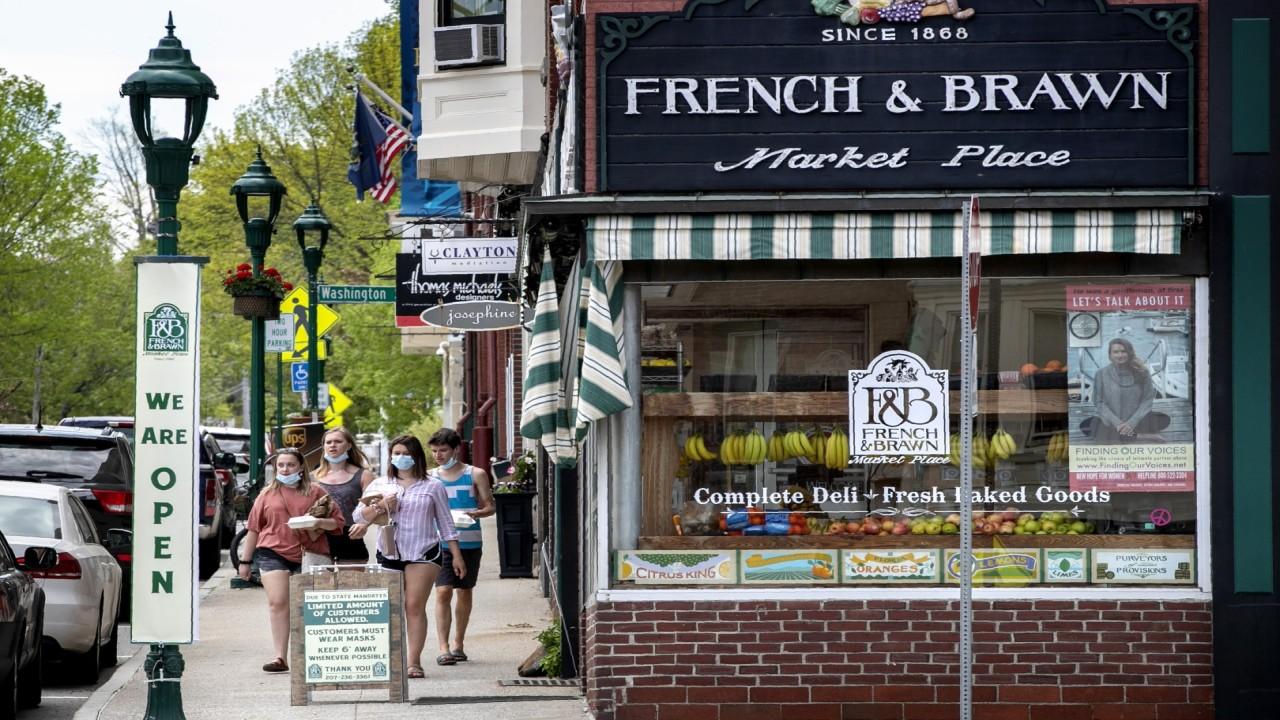SBA loosens loan forgiveness rules for PPP recipients
The agencies' relaxation of the rule means that business owners won't be on the hook for the full amount borrowed
Small business owners who tapped a government-backed aid program received a break on loan forgiveness this week.
The Treasury Department and Small Business Administration loosened the rules of the government-backed Paycheck Protection Program to ensure the majority of small business owners who received aid are able to get at least part of the money forgiven.
The new rule stipulates that even if loan recipients don't meet the 60 percent threshold, the federal government will still forgive part of the loan, so long as 60 percent of the amount forgiven went toward payroll.
TRUMP SIGNS PPP REFORM BILL LOOSENING RESTRICTIONS ON SMALL BIZ LOAN RECIPIENTS
For instance, if a borrower received a $100,000 loan and spent $54,000 of its loan on payroll, the maximum amount of forgiveness that an individual could receive is $90,000, according to the SBA; in that scenario, $54,000 in payroll costs accounts for 60 percent of the forgiveness amount, and $36,000 in non-payroll costs constitutes 40 percent of the forgiveness amount.
The agencies' relaxation of the rule means that business owners won't be on the hook for the full amount borrowed if they choose to spend more than 40 percent on operating costs like rent and utilities.
If the loans are not forgiven, a business will have five years at 1 percent interest to repay the loan, rather than the initial two years.
WHAT HAPPENS TO YOUR UNEMPLOYMENT BENEFITS IF YOU REFUSE TO GO BACK TO WORK?
Originally, the program rules required that borrowers spend 75 percent of the money on payroll in order for the government to forgive it, effectively turning it into a grant. But small business owners complained the rules were too restrictive, and last week, the threshold was lowered to 60 percent with the passage of the Paycheck Protection Program Flexibility Act.
Another key aspect of the PPFA is that it gives businesses until Dec. 31 to rehire workers in order for their salaries to count toward forgiveness; previously, they had until June 30 -- a problem for some in states where businesses were slower to open their economies. The employee salary eligible for forgiveness is still capped at $100,000.
The law also eased rehiring requirements for businesses. For instance, if a small business owner is unable to rehire an individual who was an employee on or before Feb. 15, or is able to prove they were unable to hire a similarly qualified candidate, their loan may still be eligible for forgiveness.
CONGRESS HAS FUNNELED TRILLIONS TO CORONAVIRUS RELIEF. WHERE IS THAT MONEY GOING?
“This bill will provide businesses with more time and flexibility to keep their employees on the payroll and ensure their continued operations as we safely reopen our country,” SBA Administrator Jovita Carranza and Treasury Secretary Steven Mnuchin said in a joint statement.
In order to have their loan forgiven, small business owners must fill out an application, released in mid-May, and submit it to the bank or lender that approved their initial request. The application focuses on key criteria centered around what types of expenses are forgivable. It also includes a step-by-step calculator for determining forgiveness eligibility. The SBA said Monday that it will release a modified loan forgiveness applications.
The second round of PPP funding began April 27 after the initial tranche of $349 billion evaporated in just 13 days. As of Wednesday, more than 4.5 million loans worth close to $511 billion had been distributed through the program. Congress allocated about $610 billion to the PPP, leaving roughly $100 billion left over in the fund.
GET FOX BUSINESS ON THE GO BY CLICKING HERE




















